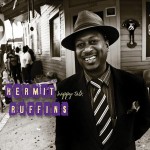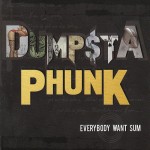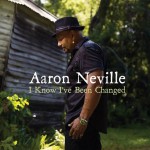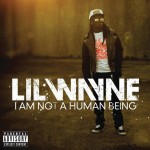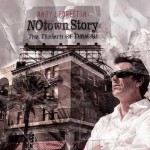| |
| |
| |
|
| |
| |
|
| |
Saturday, October 30, 2010
Offbeat New Album Reviews
Walter Payton, longtime New Orleans jazz bassist and educator, dies at 68
Walter Payton Jr., the genial bassist who anchored the Preservation Hall Jazz Band and shaped generations of public school students, died Thursday at Kindred Hospital-New Orleans following a lengthy illness. He was 68.
Mr. Payton, the father of Grammy-winning trumpeter Nicholas Payton, was an exceptionally versatile musician and an exceptionally engaging personality. A student of music theory and music history, he could easily switch from electric bass to upright acoustic bass, from rhythm & blues to traditional jazz to modern jazz. He was also an accomplished classical musician who, for many years, kept a grand piano in his parlor. His recording credits include Aaron Neville's "Tell It Like It Is" and Lee Dorsey's "Working in a Coal Mine."
He grew up on Annunciation Street. As a boy, he played sousaophone and dismissed his grandmother's suggestion that he take up the string bass. "Naw, I don't see nothing but old men playing those things," he said, recalling the scene in a 2008 interview. "I don't want to do that."
But on Easter 1958, he attended a performance at the Municipal Auditorium by James Moody and Ellis Marsalis' New Orleans Jazz Quintet. "The bass players in both groups, they were having so much fun," he said. "More fun than anyone else in the band. There were literally dancing with their basses."
He was sold on the instrument. Decades later, he described its appeal. The upright bass is "shaped just like a lady," he said, laughing. "The hips, the waist. And the best thing is, she don't do nothing you don't tell her to. She don't talk back. If you press her in the right place, she says just what you want her to say. And no more."
Other than a brief time spent working in the cafeteria of Xavier University, he made a living in music. After graduating from Xavier with a degree in music education, he spent the next 25 years teaching in the New Orleans public school system. During his years at McDonogh 15 elementary in the French Quarter, he taught music and organized the school band; in the '70s, he conducted the young band at the New Orleans Jazz and Heritage Festival.
He influenced many aspiring musicians, including his future boss, Preservation Hall creative director Ben Jaffe. “When I was his student – and I still consider myself his student – Walter was a bit scary,” Jaffe once recalled. “But he had a lasting impact on me. He instilled in me a respect for music.”
Throughout his teaching career, Mr. Payton also worked as a professional musician in a variety of settings. He marched with various brass bands, including the Eureka, Olympia. Treme and Apollo. He made his debut at Preservation Hall in 1965 and worked at the old Dew Drop Inn and the original Blue Room at the Fairmont Hotel.
After retiring from the school system in 1991, he plunged headlong into the life of a fulltime musician. With his Snap Bean and Gumbo File combos and with the Preservation Hall Jazz Band, he traveled the globe. “I love being on the road,” Mr. Payton said in 2008. “I love it, love it, love it.”
Along the way he performed at Carnegie Hall, accompanied symphony orchestras and backed Robert Parker, Nancy Wilson, Harry Connick Jr., Clark Terry, Doc Paulin, the king of Thailand, and many more. He contributed to his son Nicholas' 2001 Louis Armstrong tribute "Dear Louis."
Mr. Patyon was a robust man who at one point was an avid kick-boxer and martial arts practitioner. Married four times, he was quick with a sly smile and an even slyer line.
“He always used to say to girls, ‘When did you leave heaven? You’re so beautiful,’” recalled Michael Paz, the Preservation Hall Jazz Band's road manager.
Mr. Payton suffered a stroke in January while in Washington D.C. on tour with Preservation Hall. He eventually returned to New Orleans, but never recovered sufficiently to return to the road. He had been in and out of hospitals for several months.
“I saw him a couple days ago, and he spoke to me a little, which he hadn’t done the last few times I saw him,” Paz said.
Village Voice: "Kermit Ruffins Couldn't Be Happier"
by Alex Rawls
Why the New Orleans icon is in no hurry to come to a city near you
 Trumpeter Kermit Ruffins sprays a steady stream of lighter fluid on a small flame in his rolling barbecue pit, parked in front of Sydney's Saloon on St. Bernard Avenue in New Orleans. He's out of his usual suit and hat, wearing instead a white undershirt, jeans, rarely used white tennis shoes, and a kerchief. Ruffins has been an icon in New Orleans since his days with the Rebirth Brass Band; his recurring role on HBO's Treme further raised his profile nationwide. For visitors to the city, he is now emblematic of New Orleans' determination to have a good time, no matter what. Like today, for example: It's Monday afternoon—an off day—and he's in the mood to cook.
Trumpeter Kermit Ruffins sprays a steady stream of lighter fluid on a small flame in his rolling barbecue pit, parked in front of Sydney's Saloon on St. Bernard Avenue in New Orleans. He's out of his usual suit and hat, wearing instead a white undershirt, jeans, rarely used white tennis shoes, and a kerchief. Ruffins has been an icon in New Orleans since his days with the Rebirth Brass Band; his recurring role on HBO's Treme further raised his profile nationwide. For visitors to the city, he is now emblematic of New Orleans' determination to have a good time, no matter what. Like today, for example: It's Monday afternoon—an off day—and he's in the mood to cook.Before that, though, he's shooting the shit with guys on the corner, nursing a Bud Light, and prepping the grill for hot sausage later. He has a new album—" 'Hap-py talk, keep talkin' happy talk,' " he sings. "That's the title track. We put a second-line beat on it." But he's also got bats, balls, and his baseball glove in the back of his pick-up. "We've got a game every week," he says. "I'm the pitcher." After the game, he plans to return to Sidney's, the bar he owns in the Treme neighborhood, and grill out. When a neighbor opening a body shop across the street complains that he can't eat pork, Ruffins reassures him: "All-beef sausages. And once I start cooking, people bring other stuff—chickens, burgers."
The New Orleans–born-and-bred Ruffins was one of the founders of the Rebirth Brass Band in 1983, but he went solo in 1992. He is often likened to Louis Armstrong, but only as the good-natured embodiment of the Crescent City's mix of traditional jazz, the blues, and street-parade music. He'll travel if the price is right (mostly festival gigs, including a two-night stint at BAM in December), but he toured with Rebirth and doesn't feel the need to go through that again. He's got enough work in New Orleans, and he can do what he wants. Old friends from Clark Senior High School hang out at Sidney's—"We can talk about the same teachers and stuff that happened"—and he tailgates outside of Treme bars when the Saints play home games at the Louisiana Superdome. "I can't smoke reefer in the Dome," he says, his eyes widening conspiratorially. "It's better here. It's more convenient. It's more like a party."
Ruffins's grill is part of his identity. He cooks wherever he goes, even outside the studio during sessions. It's 12 feet long from trailer hitch to smoker, built in Atlanta for $4,200. A Saints window flag is duct-taped to its chimney. With a backing band called the Barbecue Swingers, it's a must, and he's had it for 10 years. Before that, he'd set up a grill in the bed of his truck when he played Thursday nights at Vaughan's in the Bywater. "Nothing like barbecue between sets to pick up the band," he says, laughing. "And it makes everything smell like a picnic." Oh, and by the way: "You know what else we did?" Ruffins sings: " 'What makes that little old ant/Think he can move that rubber tree plant?/High hopes/He's got hi-i-igh hopes!' " He mimics smoking a reefer and cracks himself up.
Happy Talk presents Ruffins looking outward. He's prone to celebrating the city, generally, and Treme, specifically, with tourist-bureau regularity, but there he leans on the standards and a band of New Orleans A-list talent that brings every track to life. He's a casual vocalist who settles for clichés more often than he should, but he's still the Pied Piper of Good Times for New Orleanians and New Orleanians at heart. In Treme's premiere episode, someone asks Ruffins, "Don't you want to be famous? Are you standing there telling me that all you want to do is get high, play some trumpet, and barbecue in New Orleans your whole damned life?" The answer: "That'll work."
Friday, October 15, 2010
Donna's Bar in New Orleans to reopen — With A New Name
c/o | offBeat.com
Donna’s On Rampart—the old Donna’s Bar & Grill, which closed in August—has been leased by optometrist Dr. Eugene Oppman, who also owns the Carver Theater on Orleans Avenue. Oppman started his optometry career in the Carver Theater in 1987 and operated a clinic there until Hurricane Katrina hit.
Morris Kahn, a tax specialist who’s working with Dr. Oppman to revive Donna’s, says that the new owner has applied for all licenses including one for alcoholic beverages and the so-called “mayoralty permit,” which would allow live music at the club. Kahn says there are structural and plumbing issues which are being addressed currently.
“We’ve applied for the permits, and we’re waiting the required 45 days to see if they’ve been approved,” said Kahn.
Thursday, October 14, 2010
MY MORNING JACKET TO RAFFLE PHOTOGRAPHS FOR NEW ORLEANS

MY MORNING JACKET TO RAFFLE PHOTOGRAPHS FOR NEW ORLEANS
During next week's historic run at New York's Terminal 5, My Morning Jacket will conduct a raffle for two original photos to benefit New Orleans's Gulf Restoration Network (www.healthygulf.org) and Sweet Home New Orleans (www.sweethomeneworleans.org ). The photographs feature a shot of the band at Preservation Hall, taken by Danny Clinch, and a live photo from the filming of My Morning Jacket's "Okonokos", by Sam Erickson. Raffle tickets can be purchased at the shows for $5/ticket, or a book of 5 tickets for $20. The drawing will be held after the final show on Saturday, October 23rd.

LIMITED EDITION PICTURE DISCS TO BE SOLD AT TERMINAL 5 SHOWS
My Morning Jacket will be selling limited edition picture discs of It Still Moves, Z, and Evil Urges on each album's night. In addition, At Dawn and The Tennessee Fire have been repressed on vinyl for sale at the shows.Wednesday, October 13, 2010
Vote for the next Threadhead Records project
Fan-funded New Orleans-based Threadhead Records is hosting a poll to help determine their next project. You do not have to register to vote. You just click on the link and can vote once per IP address per day through 10/18.
My favorites include: Midnite Disturbers (the all-star brass band, which has included Stanton Moore, Kevin O'Day, Skerik, Ben Ellman, Big Sam, Mark Mullins, Shamarr Allen, Troy Andrews, Kirk Joseph, Matt Perrine)
Tin Men feat. Alex McMurray, Matt Perrine (again) & Washboard Chaz
Injun Orchestra
Feel free to vote for your favorite.
Vote Here! Poll Closes at 12am est 10/18
One vote per IP address, per day. At the end of the week, the top 10 suggestions will be put up for a final vote. Final poll will be open for another week and at the end of that time, THR will choose a project from the top 3 most popular suggestions to pursue. Note: There is no guarantee that any project suggested will materialize into a THR project but THR will seriously investigate the possibility.
| Who should we pursue for our next project? | |
| AfricanZydeco Revue | |
| RamaFest: Twangorama and Bonerama collaboration | |
| David Torkanowsky | |
| Kora Konnection | |
| Anders Osborne (?), Johnny Sansone and John Fohl | |
| VOW | |
| Germaine Bazzle | |
| groovesect and the soul project (soulsect) | |
| Threadhead Records All-Stars | |
| A childrens CD recording the music clinic kids | |
| All That | |
| Midnite Disturbers | |
| Paul Sanchez and the Rolling Road Show | |
| Threadhead Records artists do the History of New Orleans music | |
| Wendell Brunious | |
| Christmas funk compilation | |
| Junko Pardners | |
| The Injun Orchestra | |
| Creole String Beans | |
| Brint Anderson | |
| Helen Gillet | |
| Joe Krown trio | |
| Bob Andrews | |
| (Big Fine) Ellen Smith | |
| John Gros | |
| Sasha Masakowski | |
| Tin Men | |
| Johnny Sansone | |
| Beatin Path | |
Monday, October 11, 2010
In Picture: 2010 New Orleans Ponderosa Stomp
words & photos by Jacob Blickenstaff

The Ponderosa Stomp is now in its 9th year and has grown steadily since its origins as a backyard wedding party for festival founder Ira 'Dr. Ike' Padnos. The 2-day, New Orleans-based festival (that took place on Sept 24 and 25th this year) brings to the stage an amazing line-up of 'unsung heroes' and originators in the intermingled genres of country, blues, garage, rock n' roll, soul, swamp pop, rhythm & blues, and funk. Attendees experienced artists who actively recorded in the 1940's through the 1970's and 1980's delivering profoundly moving and authentic performances, providing a vivid glimpse into a world of music that might seem long-gone.
The Stomp is musically successful because it encourages artists to perform their original music and brings in talented and dedicated bands to support them. This year included many of the usual suspects (check out the review and pictures from 2009): New Orleans soul-blues veterans Lil Buck and the Top Cats, Western Music masters Deke Dickerson and the Eccophonics, Michael Hurtt and the Haunted Hearts, The A-Bones, and Eve and the Exiles. Jenny Dee and the Deelinquents debuted with La La Brooks of the Crystals who will be in NYC on October 20th when she plays a CMJ show at BB King Blues Club & Grill with Paula Valstein. Tickets are on sale if you don't have a CMJ badge.
The Stomp attracts a core audience of baby boomer soul and blues fanatics, rock-a-billies, Zoot-suiters, music writers, radio hosts, DJ's, record collectors, historians, WFMU-types, and a sprinkling of open-minded music lovers of varied backgrounds and ages. During the day, there are panel discussions between artists and respected historians, screenings of rare music documentaries and a record show. Even for the most die-hard, the sum total is a bit overwhelming. But Dr. Ike, an anesthesiologist by trade, seems to revel in the dazed and delirious look on people's faces at the end of 2 non-stop days. If you can keep your bloodshot eyes open, you'll see him floating from stage to stage with his airbrushed T-shirt that reads "Dr. Ike Stomped My Ass".
--
Night 1 - Friday 9/24
DL Menard, Vin Bruce, Leroy Martin and Harry Anselmi with the Lost Bayou Ramblers


Tommy Brown with Los Po-Boy-Citos


La La Brooks (The Crystals) with Jenny Dee and the Deelinquents






The Relatives









Thee Midniters








Jay Chevalier with Michael Hurtt and the Haunted Hearts

The Trashmen

Night 2 - Saturday 9/25
Bobby Allen

Willie West (with Lil Buck Sinegal)


Lazy Lester



Roy Head


Backstage with Ronnie Spector's back-up singers

Barbara Lynn with Ronnie Spector

Barbara Lynn



Wendy Rene

Sugar Pie DeSanto (with Lil Buck and the Top Cats)







Lil Buck Sinegal and the Top Cats

Roy Loney and Cyril Jordan (of the Flamin' Groovies) with the A-Bones

... with Lazy Lester



Joe 'Ducktail' Clay (in crowd)

Red Simpson with Deke Dickerson and the Eccophonics


Young Jessie w/ Deke Dickerson


Duane Eddy w/ Deke Dickerson + Ron Dziubla (sax)




